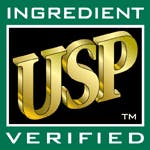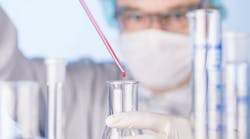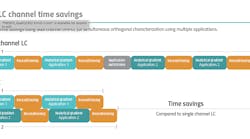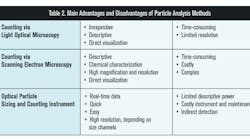Inside USPs New Pharmaceutical Ingredient Verification Program
Ensuring the quality of ingredients used in pharmaceuticals ultimately benefits consumers. Responding to increasing concerns about the quality and consistency of these ingredients, U.S. Pharmacopeia (USP) has launched a third-party verification program for active pharmaceutical ingredients (API) and excipients.
The program is designed to assure manufacturers, regulatory authorities and consumers that drug substances and excipients bearing the USP Program Mark are of consistent, high quality. There are reports about ingredients that are counterfeit or are substandard, not only in the U.S. but all over the world, says Eric Sheinin, Ph.D., vice president of the new program at USP. There is a real need for someone independent who can guarantee they are consistent in quality and comply with the ingredient label.
There are three main elements to the verification process. A GMP (good manufacturing practices) audit will be performed on the facility. ICH Q7, USP 1078 and IPEC/PQG guidelines all will be used for this purpose. There also will be an evaluation and review of manufacturing and quality control documentation.
This verification does not replace the DMF (drug master file). The DMF-type of information is a critical portion of the document review process, says Sheinin. Testing of random drug substance samples will take place after USP has determined the documentation is acceptable. Drug substances will be tested for label or certificate of analysis claims for identification, strength, purity and quality.
At least three lots will be tested looking for quality consistency from batch to batch. Recertification is required every three years. In the intervening years, a document review, self audit and lab testing on selected lots take place to maintain the integrity of the Certificate of Standards Compliance.
This is a way a supplier can distinguish themselves from a competitor, says Sheinin. It also is an assurance from a third party that your company has met the most rigorous standards of process quality and consistency.
Deficiencies found during the USP audit will be listed and grouped by severity. Manufacturers are expected to address each deficiency.
If there are problems, we can give them a list of companies they can work with to help them. It would be a conflict of interest for us to directly help them, says Sheinin.
A manual for participants is available on the USP website (www.usp.org). It describes procedures and information needed for verification. It also includes a pre-audit documentation checklist as well as an on-site audit checklist. According to Sheinin, these checklists make fairly certain that good quality systems are in place before USP auditors are sent to the facility.
The Pharmaceutical Ingredient Verification Program audit is $15,000 for two auditors for a three-day audit, plus travel expenses. The document review and laboratory testing for the three-year period has an introductory price of $10,000 per ingredient.
USP is now running similar programs for dietary supplements: The Dietary Supplement Verification Program and Dietary Supplement Ingredient Verification Program audit is $15,000 plus travel expenses and the price for the document review and testing is $30,000 for the three-year period.
GMP audits are completed per ingredient and per site. However, if a parent ingredient is verified, derivative ingredients are covered without an additional GMP audit, as long as the ingredient was manufactured using similar equipment and on the same site. These derivative ingredients still require annual document review and laboratory testing.
The USP audit is not a substitute for a regulatory audit, but it is designed to prepare a company for the strictest of regulatory audits. While other excipient audits exist, USPs verification is the only single, recognized standard and audit process from an independent third party.






